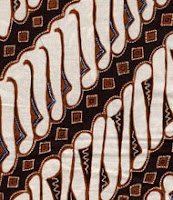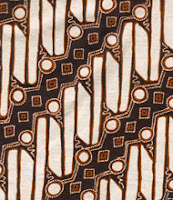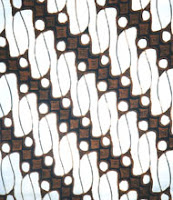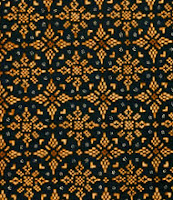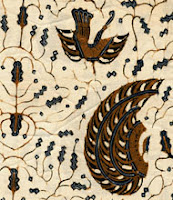Kulonprogo's Batik Art
All about batik's art of Kulonprogo Yogyakarta
Tuesday, 27 August 2019
Monday, 5 August 2019
LET'S KNOW THE OGLEK ART FROM TUKSONO VILLAGE, SENTOLO DISTRICT, KULONPROGO REGENCY, YOGYAKARTA
On Sunday 04/08/2019 yesterday
the village of Tuksono, Sentolo sub-district, Kulonprogo Regency, Yogyakarta
held the Oglek Festivall in the context of efforts to preserve the type of art
that became an icon of the village of Tuksono. This activity was initiated by
the Tuksono Cultural Village Board along with the Village Head and his staff.
This year's Oglek Festival is the first festival to be held. This activity took
place in the Sendang Kamulyan Taruban complex. Besides that, this festival
event was also held in order to provide space for the actualization of the Art
Studio in Tuksono. On that occasion also displayed the ability of children of
Tuksono cultural arts activists who are members of Amarta Art Studio, Karang sub-village
of Tuksono village.
In this inaugural Oglek festival
there are still very few participants, only 5 Oglek groups. These five groups
are indeed from dukuh which currently still still have the Oglek Group.
However, as stated by the Head of Tuksono Village: "In the future it is expected
that in each dukuh, new Oglek groups will grow so that in the festival next
year the number of participants will increase or increase".
Oglek Art was created by Mbah
Rubikin Noto (Sruntul) Sunaryo or commonly called Rubikin (Sruntul) in 1957.
Oglek art is a typical Tuksono art that is very popular with the public. This
art is easily recognizable because it is very unique and interesting. The word
Oglek itself comes from the word "Oglek-oglek" which means the dance
has straight movements from head to waist.
Oglek has similarities with
Jathilan art, dynamic movements with broken styles brought with four core
dancers. This dance illustrates the war between Sutiwijoyo and Arya Penangsan.
Dancers wear yellow costumes and ride braids, when experiencing a trance of the
spirit that is called by the handler, the movements become dynamic and
flexible. His body when whipped by the handler does not feel pain. Uniquely,
this Oglek staging must have its own ritual offerings performed at the staging
place.
Oglek's art tells the same story
in every stage, the battle of Sutowijoyo and Aryo Penangsang becomes an
interesting story and the story does not change. Originally, Oglek's art
consisted of 5 parts of the scene, so that if it was responded to or staged
would take approximately 3 hours. Oglek art is an example of art favored by the
people of Tuksono Village, this can be seen from the many requests of the
community to be staged again. This art group performs at festivals,
celebrations and gets invitations to perform outside the city.
In the course of time the art of
Oglek suffered a setback due to the lack of voluntary interest in the art of
Oglek. At present in Tuksono, the Oglek art group has only 6 groups left from
12 sub-villages in the Tuksono seda, different from the past where Oglek art
was in each hamlet. The withdrawal of Oglek art is one proof that elements of
local culture have begun to be abandoned by the people.
Hopefully what is now done by the
Tuksono cultural village through the Oglek festival will revive public interest
in traditional arts and other traditional traditions that are currently still
running in the process of modernization.
Friday, 19 February 2016
Traditional Batik Motif Yogyakarta
Batik patterns are divided into different families of designs, each with hundreds of variations within them. The following gives you a brief introduction to the main design families. You'll see certain designs that belonged to the sacred, forbidden patterns reserved for the royal court. Over time, these particular patterns did enter into common use. Yet to this day, if a person does not belong to the court, they would never wear those patterns inside the keraton, or palace walls.
Ceplok Motifs
The Ceplok family includes a wide range of geometric designs, often based on circular rosettes, stars or other small shapes, forming an overall symmetric pattern on the cloth
Grompol means to gather together. Often worn for wedding ceremonies, the pattern symbolizes the coming together of a harmonious marriage, for children, good luck, and happiness.
Kawung Motifs
The Kawung is one of the oldest designs, and was reserved for the royal family. It represents a cross-section of the aren-palm fruit, and some say the cross in between the four ovals refers to the universal energy source.
While there are many variations, the basic structure is a group of four circles or ovals nearly touching each other, laid out on the cloth in geometric symmetry.
Parang Motifs
Parang Barong
In times past, Parang Barong was a sacred pattern worn only by the king. The motif reminded him to guard himself carefully so he would be a responsible, honest and just ruler.
Parang Rusak
Another of the Parang designs worn by the royal family on state occasions, Parang Rusak symbolizes the human being's internal fight against wickedness by controlling their desires so their wise, noble character would win out.
Lereng
Refers to the diagonal rows of patterns in between the parang motifs. In addition, many patterns are simply rows of narrow diagonal lines filled with a whole array of small patterns. The Udang Liris, again, one of the old patterns reserved for the royal court, is one of the more famous of these motifs.
Udang Liris or light rain symbolizes fertility, the hope for prosperity, determination, to have courage to carry out what's important for the nation and her people.
Nitik Motifs
Nitik Motifs are among the oldest batik patterns and were inspired by woven patola cloths brought by traders from Gujarat, India long ago. The geometric design is created with small dots and dashes imitating the original woven fabric.
Truntum : Worn by parents of a wedding couple the Truntum pattern.
Semen Motifs
Semen, based on the word semi, meaning to sprout or grow, are non-geometric patterns inspired by the natural world. Filled with stylized stems, flowers, leaves, mountains, and animals, this group of designs was highly important for royalty on special occasions, as well as common people in everyday use.
Garuda, the mystical bird-man in Hindu mythology, who carried Vishnu through the heavens, is often portrayed in Semen designs with a single, or pair of wings (Lar) or the wings and tail (Sawat). Often associated with Semen patterns, the wing shape is also found with Parang and Ceplok motifs.
Isen Motifs
Filling patterns called Isen are highly characteristic of Indonesian, especially Javanese, batik. Finely rendered in a wax line, these small designs add a depth and harmonious beauty to the overall cloth.
Now that you have a glimpse into the world of traditional Yogyakarta batik, discover the batik process in creating these intricate cloths, here.
If you're already familiar with the process, learn about making batik in our workshops, customized just for you, here.
Wednesday, 3 February 2016
Special Treatments to the Batik Cloth
Prada or Gold Cloth
For special occasions, batik was formerly decorated with gold lead or gold dust. This cloth is known as Prada cloth. Gold leaf was used in the Jogjakarta and Surakarta area. The Central Javanese used gold dust to decorate their Prada cloth. It was applied to the fabric using a handmade glue consisting of egg white or linseed oil and yellow earth. The gold would remain on the cloth even after it had been washed. The gold could follow the design of the cloth or could take on its own design. Older batiks could be given a new look by applying gold to them. Gold decorated cloth is still made today; however, gold paint has replaced gold dust and leaf.
Design Process
The outline of the pattern is blocked out onto the cloth, traditionally with charcoal or graphite. Traditional batik designs utilize patterns handed down over the generations. It is very seldom that an artisan is so skilled that he can work from memory and would not need to draw an outline of the pattern before applying the wax. Often designs are traced from stencils or patterns called pola. Another method of tracing a pattern onto a cloth is by laying the cloth on a glass table that is illuminated from below which casts a shadow of the pattern onto the cloth. The shadow is then traced with a pencil. In large batik factories today, men usually are in charge of drawing the patterns onto the cloth.
Subscribe to:
Comments (Atom)





